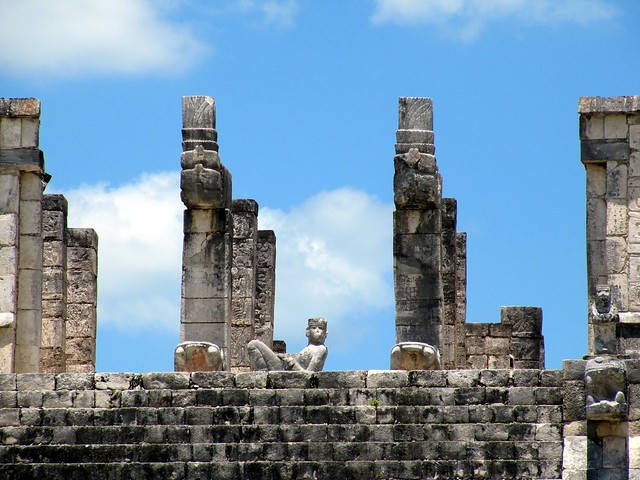On my most recent adventure, I took a trip through Chichen
Itza and Tula, Mexico, comparing them on how their architectural forms are
similar, but also different. By doing this exploration I was able to learn more
about the relevancy of a Toltec occupation of Chichen Itza. For this trip I used
Google Maps as a guide for a first-hand view.
As I began my trip, I started at Pyramid B in Tula. This
pyramid is located on the Eastern side of Mexico, and is most noted for its
architecture and stylistic figures. This area was founded by the Toltecs. After
learning a bit about the Toltec history, I was able to dive in and learn about
the architecture. Toltec architecture was influenced significantly by militaristic
actions and religion. The theme of war is very relevant in the art work on the
walls, telling stories. In addition, the temples had horizontal roofs, and were
made of limestone. The architecture and stone figures were monumental in the
fact that they gave the ancient civilization precision and grace.
As for Chichen Itza (meaning at the mouth of the well of Itza), it was one of the larger Mayan cities, in Mesoamerica. The city with a diverse population, had many unique architectural styles, and some monumental buildings describing the activities that occurred in the area. The building I am exploring today is the Temple of the Warriors. This temple was known for its great gatherings. This same temple was built of four platforms, surrounded on the south and west sides by nearly 200 round and square columns. These columns are ironically carved with Toltec warriors giving myself the first reason of why Chichen Itza may be a Toltec site. The temple also had the class ramp style that Chichen Itza was known for, allowing for an open stairway up the structure.
When comparing this temple to Pyramid B in Tula, there are
some direct correlations showing the Toltec influence. Firstly, all of the
columns located within the area are representations of Toltec warriors, which
shows the direct influence of the Toltec people. The temple from a structural standpoint, also
has a flat roof like Pyramid B in Tula. In addition, they both have the ramped
staircase and the vertical walls, which is very common in Mayan architecture,
and shows the stylistic appearance of the time period. One of the biggest
symbolic differences I found was that of the serpent representations on top of
the pyramid. From all of these similarities, and few differences, it is clear that from the
structural layout of stone walls, military and religious design, and artistic
columns and artistic expressions, this architecture has come from
the same influence.
Therefore, after visiting these fascinating sites, I can
conclude that due to the structural and architectural similarities between
Pyramid B and the Temple of Warriors, Chichen Itza is of Toltec dominance. That is all from this trip, but stay tuned for my next adventure!



No comments:
Post a Comment